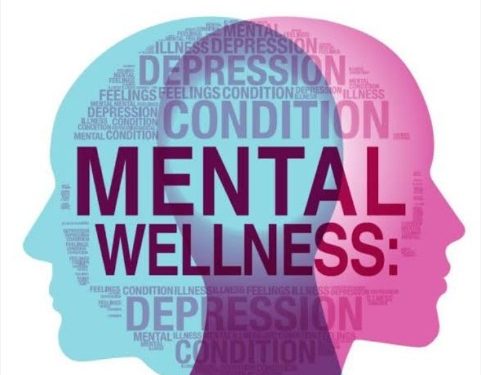Life can be stressful as work, family, health, and financial concerns pile up, taking a toll on mental wellness. Practicing self-hypnosis is a method to foster relaxation and resilience.
This article explores how hypnosis works and its benefits. Additionally, we provide tips for safely practicing self-hypnosis to enhance mental health.
What is Hypnosis Exactly?
Hypnosis is a state of focused concentration and lowered distractions. It’s like when you get really absorbed in a movie or book and tune everything else out. In hypnosis, you calmly take in helpful suggestions for changing habits, relieving pain, reducing anxiety, or other improvements. It allows making positive changes in the mind’s subconscious region. Contrary to myths, you remain aware and in control when hypnotized, and you cannot get ‘stuck’ in a trance. You enter and exit hypnosis of your own accord.
The Many Benefits of Hypnosis
Research shows hypnosis can help:
- Reduce anxiety, sadness, and stress
- Boost motivation and self-esteem
- Break bad habits like overeating or smoking
- Ease chronic pain like migraines or fibromyalgia
- Improve sleep issues like insomnia
- Overcome fears and phobias
Practicing self-hypnosis allows you to access relaxation and focus, fostering lasting calmness and confidence with consistent effort.
Getting Started with Self-Hypnosis
Getting started with self-hypnosis training is a process that involves entering a meditative trance state using relaxation techniques and mental imagery. To begin practicing self-hypnosis, the first step is to find a quiet space, away from loud noises, and minimize distractions by turning off phones and other devices. Next, it’s essential to get comfortable by sitting or lying down in a position that can be sustained for 20 or more minutes, preventing distractions from stiffness or strain.
Wearing loose, soft clothing, removing glasses or contacts, kicking off shoes, and untying hair can help loosen up the body. The goal is to relax as much as possible. Setting an intention is crucial; whether the aim is to reduce anxiety, improve confidence, change habits, or achieve something else, having a clear goal in mind is essential.
Closing your eyes is an effective way to reduce visual stimulation, allowing you to focus internally. As you enter this state, concentrate fully on taking slow, full breaths, which helps oxygenate your body and brain while lowering stress hormone levels. Another step involves speaking and encouraging suggestions in a calm tone. Verbally guide yourself to relax each muscle group until fully at ease and visualize positive changes, repeating affirmations like “I am confident” or “I make healthy choices.”
While it takes practice, self-hypnosis allows you to access your inner strength for transformation. It’s important to be patient with yourself as you learn and develop this skill.
Sample Self-Hypnosis Scripts
Use pre-written scripts or record your soothing hypnosis session. Here are some examples of calming phrases you might include:
For Relaxation:
- “I am drifting into a peaceful state of hypnosis.”
- “With each slow breath, I feel more and more relaxed.”
- “Every muscle in my body feels loose, limp, and calm.”
- “My mind is serene and my body tranquil.”
For Motivation:
- “I have unlimited potential and talents.”
- “I am highly motivated and productive.”
- “My work energizes me with purpose.”
- “I enjoy accomplishing great things.”
For Confidence:
- “I am confident in being my true self.”
- “I radiate a positive attitude that draws people in.”
- “Being confident feels natural to me.”
- “I believe in my abilities and handle any situation calmly.”
Let the tranquil trance state boost your abilities. Have patience and keep practicing self-hypnosis to master it.
Techniques That Help Deepen Hypnosis
Once you achieve a relaxed state, try these tips to deepen the hypnotic experience:
- Mindful Breathing – Continue taking slow, full breaths to stay centered and calm.
- Mental Imagery – Picture yourself succeeding at your goals or imagining your favorite peaceful scenes. Make images vivid using colors, sounds, smells, and details.
- Guided Visualization – Mentally take a mini mind journey like visualizing walking down steps into a serene garden. Use all your senses to imagine the details.
- Memory Recall – Reflect on memories when you felt profoundly relaxed, motivated, confident, or successful. Re-experience the positive emotions.
- Calming Music – Listen to gentle, soothing music without lyrics in the background to help maintain hypnotic focus.
Immerse yourself by engaging all your senses. Vivid mental images keep you absorbed in the tranquil trance.
Myths and Misconceptions about Hypnosis
Some common myths include:
You relinquish control when hypnotized – False, you remain fully in control when hypnotized and can exit at any time. The hypnotic state just allows communicate with your subconscious mind more easily.
It can make you act against your will – Not true. Hypnotists cannot make you engage in behaviors you don’t truly want to do. You remain aware and won’t do anything you find unethical or inappropriate.
It’s a sign of weakness – Hypnosis requires strength and concentration to achieve a focused mental state free of distractions. It’s about harnessing inner abilities.
It can cause you to get “stuck” – There is no risk of getting perpetually stuck in a hypnotic state. You will naturally emerge feeling relaxed and refreshed.
Only certain people can be hypnotized – Almost everyone can enter a receptive hypnotic state with practice. Relaxing and following the hypnotist’s voice is key.
Don’t let myths about loss of control or vulnerability stop you from exploring self-hypnosis. It simply guides your mind towards desired positive changes.
Making Self-Hypnosis a Healthy Lifestyle Habit
Like any new skill, consistency helps boost self-hypnosis benefits over time. Try these tips:
- Establish a routine – Choose set times like morning and evening for self-hypnosis sessions to make it a priority habit.
- Start small – Begin with just 5-10 minutes focused on a single goal before gradually increasing trance duration and addressing more aims.
- Keep a journal – Note physical and mental changes you observe from regular practice to see positive progress.
- Try apps – Hypnotherapy apps guide beginners with proven scripts and techniques. Many offer free trial sessions.
- See a hypnotherapist – A few visits coaching you on effective trance methods can help develop self-hypnosis skills faster before practicing independently.
Incorporate self-hypnosis into your self-care routine as an ongoing lifestyle ritual for improved mental health.
Key Takeaways
- Hypnosis guides your mind into a state of relaxed, focused awareness for positive change, and you remain fully in control when hypnotized.
- Self-hypnosis provides mental health benefits like lowering anxiety and building confidence. It helps change habits, reduce pain, and improve sleep too.
- Create a peaceful environment, clarify your aims, close your eyes, relax your body, and repeat positive suggestions. Deepen the trance using mindful breathing, vivid mental imagery, and visualization.
- Make self-hypnosis an ongoing habit through repetition. Add apps and journaling to see subtle improvements accumulate.
Treat your mind well through the transformative calm of self-hypnosis. Just a few minutes of guided relaxation benefits mental wellness immensely.
FAQs
How often should you practice self-hypnosis?
Aim for daily practice, even if just brief 5-10-minute sessions, to cement it as a wellness habit. Think of it like going to the mental gym.
How long does it take to see benefits from hypnosis?
It depends on the individual and aims. Smaller goals like a confidence boost may happen in a few sessions. Larger lifestyle aims like losing weight build more gradually. Stick with it.
Can you practice self-hypnosis while walking or exercising?
It’s best suited for stationary activities where you can relax and close your eyes without distractions. But with practice, some people can enter light hypnosis during low-intensity exercise by really zoning into trance suggestions.
Does hypnosis help with focus and productivity?
Yes, suggestions during hypnosis can boost motivation, concentration, energy, and feelings of determination. Certain entrepreneurs and CEOs use hypnosis to optimize their mindset for peak performance.
Final Thoughts
Take some ‘me time’ to care for your mind through the power of self-hypnosis. Just a few minutes can lead to lifelong mental benefits.


 Home
Home










